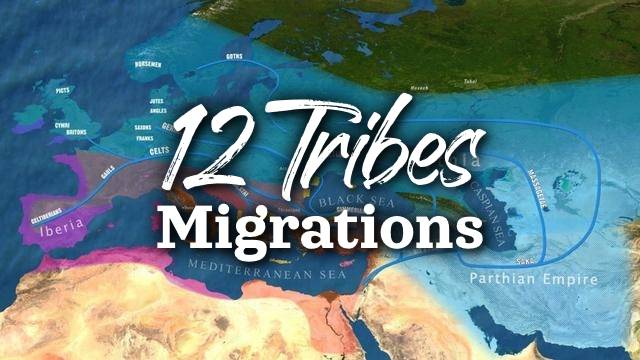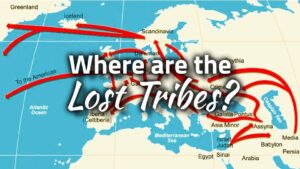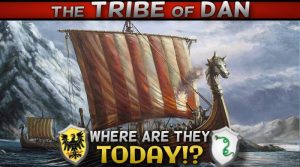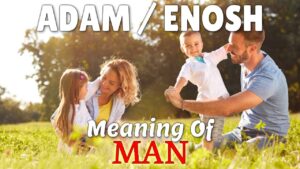Latest Posts
Norse Mythology IS Bible Mythology
This is an audiobook by By Pastor Jory Steven Brooks.
Article can be found here: https://ensignmessage.com/articles/hebrew-israelite-or-jew-2/
The religion of the early Norse exhibits customs and rituals which bear an amazing correspondence to the religion of the Hebrew Old Testament. Can all of this be just a coincidence, or is there a connection? Here is the interesting evidence.
Does Bible prophecy actually speak to us of the Norse and related peoples of Europe? I believe that it does, and that these peoples are in fact the descendants of the lost tribes of the House of Israel, removed out of their land in Assyrian captivity two thousand seven hundred years ago, and lost to recorded history. As we will see, only the Caucasian peoples who migrated out of Asia into Europe, have fulfilled many of the prophecies in both the Old and New Testaments concerning Israel in the latter days. Let’s begin our study in the one of the foremost prophetic books of the New Testament, Revelation.
In Revelation chapter 12, there appears a spectacular vision which has intrigued Christians for centuries. The vision concerns “a woman.” Bible commentators see this woman as representing Israel, and the vision as prophetic of events which were to take place in world history.
We are told in verse two that this woman, Israel, was about to give birth. The child was none other than Jesus Christ, for we are told in verse five that he was “a man-child, who was to rule all nations with a rod of iron.” It is obvious here that the woman who gave birth to our Savior is Israel, for Christ was born of the Israel tribe of Judah, of the line of David.
The vision expands in verse three. We read, “And there appeared another wonder in heaven; and behold a great red dragon, having seven heads and ten horns…… the dragon stood before the woman which was ready to be delivered, for to devour her child as soon as it was born.” This should remind us of the prophet Daniel’s prophecy of four great beast kingdoms. They were: Babylon & Assyria, Medo-Persia, Macedonia, and Rome. They formed one continuous succession of four beast empires, each one “devouring” or absorbing the previous. Using the year-for-a-day principle of prophecy, the next verse speaks of Israel being attacked and persecuted for 1,260 years by the dragon-beast, a period which ended with the fall of Rome in 410 AD.
Verse six says, “And the woman fled into the WILDERNESS, where she hath a place prepared of God, that they should feed her there a thousand two hundred and threescore days.” Where in Israel’s history do we read of the chosen nation fleeing in dispersion into the wilderness? This occurred when Assyria, the first beast-empire, conquered them in 721 B.C., dispersing them out of Palestine, into the wilderness of Europe. This is the prophetic story of Israel in the wilderness going to a place prepared by God, and it is a fascinating account of how God’s prophecies have come to pass. (745 B.C. to 476 A.D. is a 1260 lunar year period!)
We read of Israel’s dispersion into the wilderness in the Old Testament apocryphal book of II Esdras, chapter 13 and verse 40. Here the prophet Esdras tells us this about their whereabouts: “These are the ten tribes, who were taken captive from their land in the days of King Hoshea, whom Shalmanesar, the King of the Assyrians, led away into captivity and transported them across the river Euphrates. But they decided to leave the multitude of peoples and proceed to a more remote region… The way to that country, which is called Arsareth, required a long trek of a year and a half.”
The Prophet Esdras gave us still another solid clue in tracing Israel’s northern trek when he said that they “passed through the narrow entrances of the Euphrates River.” (verse 43) This refers to the headwaters of the Euphrates, which were toward the north, in northern Mesopotamia. In fact, rivers always flow from north to south in the northern hemisphere.
So we know two things for sure about the land to which the Israelites migrated: it was northward toward the Caucasus and Europe, and it was a remote wilderness. As the late Bible scholar, Dr. Pascoe Goard, has stated, “We know sufficient of the history of all the territory south of the Caucasus to be able to say that they could find no such unsettled land there. But plains, forests and river valleys of Europe still remained which had not even been explored in the days of Herodotus, three and a half centuries later. To that country they took their way.” (“Post-captivity Names of Israel,” p. 35) Remember that Esdras said they traveled to “a more remote region,” a wilderness; and that this journey was a long one over a great distance, requiring “a year and a half” of travel.
Yes, northward from the upper reaches of the Assyrian Empire was the wilderness of Europe, and there is a river Sereth in southeastern Europe even today. Over six centuries after their dispersion, the Jewish historian Flavius Josephus wrote, “The ten tribes did not return to Palestine…There are but two tribes in Asia and Europe subject to the Romans, while the ten tribes are beyond the Euphrates till now, and are an immense multitude.” (Jos. Antiq., Ch. 11, pp. 2,5) The lost ten tribes were no longer in Palestine, and were outside the realm of the Roman Empire. Even though Israel had been hidden in the wilderness for six centuries when Josephus wrote, he informs us that they were an identifiable people and a great multitude which no man could number.
Where else in the annals of history is there a record of nearly an entire nation suddenly converging on a wilderness? Only the migrations of the Anglo-Saxon- Gothic tribes into early Europe, that land “where never mankind dwelt,” (II Esdras 13:41) can fit the picture, and that occurred at the very time that Israel was dispersed and became lost to history. The Angles, Saxons, Celts, and Goths, who overspread Europe, are said to have originated in the region of Medo- Persia, about 700 B.C., the very time and place in which the nation of Israel was lost to history.
The early Christian church noted a remarkable fact: There was a distinct resemblance between ancient Israel’s religion and that of the early inhabitants of Europe. Early Christian writers used the Latin phrase, “Preparacio Evangelica,” meaning that European mythology constituted a good “preparation for the Gospel.” We now know why Norse mythology, Celtic Druidism, and Greek mythology all bear such striking similarities to the Old Testament — it’s simply because these peoples were the physical descendants of ancient Israelites who migrated to Europe in ancient times, bringing deep- rooted traces of their religion with them when they came.
But other amazing parallels exist, as well. There was also an uncanny resemblance to ancient Canaanite religion, since ancient Israel corrupted themselves with that form of worship, according to the Bible account. In addition to that, early European mythology also bears traces of the religious customs of the Babylonians and Assyrians, as you might expect, since these peoples exerted some influence when they brought Israel in captivity out of Palestine. Let’s see how history offers proof of both Biblical and Babylonian influence among the people of early Europe.
The central figure of Norse Mythology is the hero known as ODIN. He is believed to be an historic figure, the king who led his tribes northwestward from their former residence in a city called Asgard to their new home in Western Europe. Asgard literally means “city of God,” and perhaps by implication, “the city of God’s people.” Although it has never been identified by archaeologists, it is believed to have been located either in southern Russia or Northern Assyria, placing it in the region where the ten tribes were lost to history. After Odin’s death, his great deeds were expanded until he took on godhood in the folk memory of the people. But it is important to note that the name “Odin” shows unmistakable evidence of a Babylonian origin.
Alexander Hislop in his book, “The Two Babylons,” gives us a definite connection between Odin and the Middle East. ODIN was the great Norse war god. The Assyrians and Babylonians also had a war god known as “ADON,” and the Greeks later had a god named “ADONIS,” as well. The Babylonish Adon was the god of WINE. In the NORSE ELDER EDDA we are told that Odin ate no food but wine: “The illustrious father of armies, with his own hand, fattens his two wolves; but the victorious Odin takes no other nourishment to himself than what arises from the unintermittent quaffing of wine. For ’tis with WINE ALONE that Odin in arms renowned is nourished forever.”
It has also been established that the Norse religion involved worship in sacred groves, which were trees planted to simulate the walls of a temple. The Canaanites, too, had sacred groves for worship, and the disobedient nation of Israel had adopted this form of worship at the outset of their wanderings out of Palestine.
But the similarity between middle-eastern and Norse mythology does not end there. One of Odin’s sons in Norse mythology was called, “BALDER,” which Hislop states comes from the Chaldee form of “Baal- zer,” meaning the SEED OF BAAL. Quoting Alexander Hislop, “The Hebrew z, as is well known, frequently, in the later Chaldee, becomes d. Now, Baal and Adon both alike signify ‘master’ or ‘lord;’ and, therefore, if Balder be admitted to be the seed or son of Baal, that is as much as to say that he is the son of Adon; and, consequently Adon and Odin must be the same.”
The name of Odin’s other well-known son is THOR. Again to quote Mr. Hislop: “Now as Odin had a son called Thor, so the second Assyrian Adon had a son called THOUROS (Cedrenus, vol. 1, p. 29). The name Thouros seems just to be another form of Zoro, or Doro, meaning, ‘the seed.’” So, as Professor Hislop points out, Odin’s son, Thor, is an exact parallel to the Assyrian god Adon’s son Thouros. Quite an amazing similarity! (Lexicon, pars 1, p. 93: “The D is often pronounced as Th; Adon in the pointed Hebrew, being Athon.”)
It is extremely doubtful that all of this parallel detail could be mere happenstance. A very definite cultural connection somehow took place between the ancient Assyrians and Babylonians and the early European Norse. Yet another author lends credence to this, the professor Hans Gunther, in his book, “Religious Attitudes of the Indo-Europeans.” He finds much to admire in the Norse mythology, yet is led to admit that, “one perceives in him (Odin) the voice of an alien non-Nordic race.” (page 11) Professor Gunther goes on to associate certain aspects of Norse mythology with Babylon, (page 57)
Yet one more proof of a connection between the Norse and the ancient Canaanites should be noted: the evidence we have of human sacrifice. For although human sacrifice appears to have been unknown in the British isles, it was definitely practised in early days on the continent of Europe by the Celts.
But it is appropriate at this point to show that there are also some undeniably distinct similarities between Norse religion and that of the ancient Israelites. In fact, from the Norse sagas we learn many facts which lead to a comparison of both God, and God in the flesh, Immanuel, Jesus Christ. The tribes of Israel, at the time of their dispersion, would have been familiar with the Old Testament prophecies of a coming Messiah. Many of these ancient beliefs could have remained with them in their traditions after their dispersion from Palestine. So let’s compare Bible prophecies with some of the basic beliefs cherished by the early Norse.
The Norse myths recount a remarkable account of creation, which differs from the Bible in that the flood was said to be caused by the blood of a slain giant. However, in Genesis 6, verse 4, the Bible does speak about the Nephilim, or giants, during the account of the flood. In the Norse account, the world is wiped out in this catastrophe, with the exception of one household who escaped on a skiff or boat, and from whom is descended the new race from which the god Odin came.
Odin is also called the “RAFNAGUD,” or Raven-god, because he is said to have two ravens named Hugin and Munin, which he sends out into the world each day, returning at nightfall to tell him what they observed. Quoting the Norse Elder Edda,
“Hugin and Munin
Fly each day
Over the spacious earth.
Ifear for Hugin
That he come not back
Yet more anxious am I for Munin ”
This bears an unmistakable similarity with the account in Genesis chapter eight of Noah sending two birds out into the world, one of them the raven which Noah was anxious for, because he did not return.
There are many other interesting legends in the Norse sagas, such as Thor conquering a serpent- monster, while dying in the process. This was prophesied of Israel’s Messiah in GENESIS 3:15, who conquered the serpent’s seed by his own death. Other Norse religious traditions come from the Old Testament, as well. As an example, Odin is referred to as “the law-giver.” This is a title our heavenly father, Yahveh, could well claim, who gave Moses upon Mount Sinai the laws for the nation.
Another important Norse god was LOKI, the author of all evil, who was said to be of a swarthy complexion and originated in a land to the south. This may well be Israel’s remembrance of the Edomites of Palestine. An interesting parallel exists between Loki, who is said to lead the forces of evil in the last great battle in Norse mythology, and the Edomites of Bible prophecy at the end of the age. In Ezekiel chapters 36 to 39, in the last great battle, the Edomites are prominent in the forces of evil which come against God’s Israel.
The number twelve also must have been held in sacred significance to the Norse, for we read in the book, “Germanic Origins,” that Odin arrived in Svithoid, or Scythia, with twelve chief priests. The presence of these twelve priests corresponds representatively to the twelve original tribal patriarchs of Israel.
Early Norse scholar, Snorri Sturluson, translator of many ancient Scandinavian legends, compiled the HEIMSKRINGLA, OR HOME CHRONICLES. He says that just before Odin died he let himself be marked or wounded with a spear-point and that he was the owner of all men slain with weapons, and would go to Godheim (the world of the gods) and there welcome his friends. The comparisons with the Bible are again unmistakable. The Old Testament contains over one hundred prophecies relating to the coming of our God in the flesh, our “Immanuel,” or “God with us.” We find many of these in Norse mythology transferred to the character, Odin. In our Bibles we read that our coming God was to be SACRIFICED, (Zechariah 13:7), that he was to be PIERCED (Zechariah 12:10), but would have NO BROKEN BONES (Psalm 34:20, and Exodus 12:46 where Passover is a type of Christ). And whereas our Savior was sacrificed on the tree (in 1 Peter 2:23, the word translated “cross” literally means a tree) for nine hours (Psalm 22 and Matthew 27:46), Odin is said to have hung on a tree for nine days. Compare those Bible prophecies with these lines from the Norse Elder Edda:
“I know that I hung
On a wind-rocked tree
Nine whole nights,
With a spear wounded
And to Odin offered
Myself to myself; ”
The Norse legends prominently refer to the end-times. They say that in the end of the world a great battle called Gotterdammerung, or the “Twilight of the gods,” will take place between the forces of good and evil. In this great battle, all of the forces of good will be killed except for one called the “All-father.”
This brings me to my most important point. “Bulfinch’s Mythology” states that “the Scandinavians had an idea of a deity superior to Odin, uncreated and eternal,” which they called the Alfadur or “ALL-FATHER.” For although the Norse mythology allows for a pantheon of gods, yet only ONE GOD is said to be immortal. Thor, Odin, and the others I have mentioned are mortal and die at some point in the sagas.
But above Odin was said to be the one eternal true God – unnamed except to be called the “All-father,” meaning the “ever-lasting father,” as he is called in our Bibles in ISAIAH 9:6 and other places. In the original language of the Old Testament, God’s name was YAHVEH, which Ferrar Fenton translates as meaning, “the Ever-Living.” The Norse called the Allfather’ by no other name, believing that his personal name was too sacred to be spoken, although they apparently didn’t have any record of what that name was. Compare this with the actions of the few Israelites of the House of Judah who returned to Palestine and removed God’s name, YAHVEH, from our Bibles, believing it too sacred to be spoken. Yes, I am convinced that although the Norse mythology was corrupted with the religion of Assyria and Canaan, yet the proofs are there that they were indeed “the people of the Book.”








